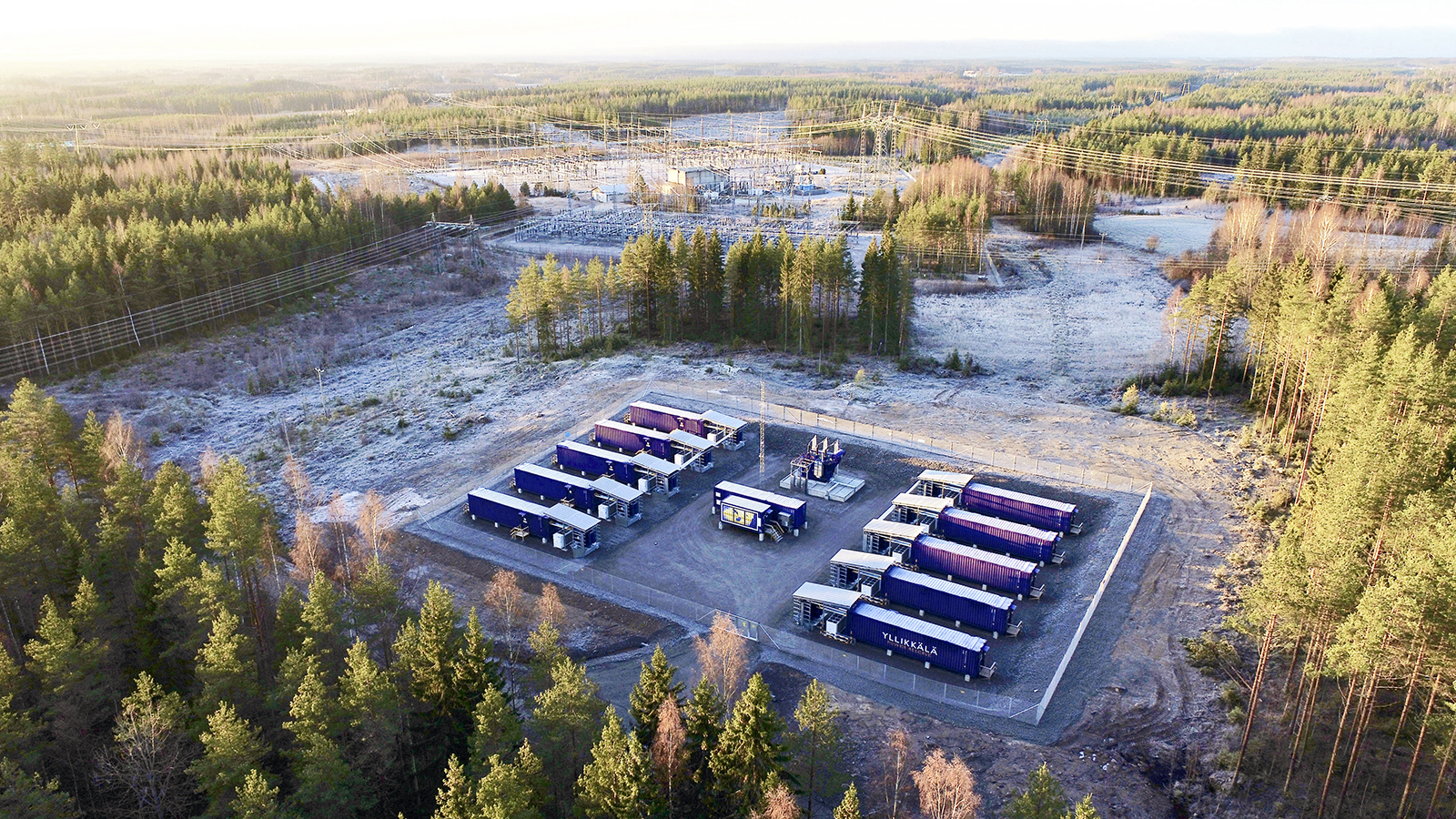“Grid energy storage can have many uses. It plays an important role as a reserve for the power system, as batteries can provide faster regulating power than a conventional power plant. Operators such as wind power companies sell electricity to their customers. If there is a shortfall in generation, they can take electricity from the battery. In the event of a network fault, batteries can also ensure the availability of wind farm electricity. In addition, batteries can compensate for reactive power in connection networks,” says Antero Reilander, Customer Manager at Fingrid.
Batteries have provided reserve markets with a new offering and additional competition.
“Fingrid purchases reserves to balance out generation and consumption in the reserve markets it maintains. Reserves may be provided by parties who have resources that can be used for regulation, such as electricity generation, batteries or flexible consumption. The power output of grid energy storage facilities can be regulated almost instantly. All providers in the reserve market are subject to the same terms and conditions, but additional ground rules have been drawn up for handling the limited energy capacity of grid energy storage facilities,” says Pia Ruokolainen, Specialist at Fingrid.
Finland could become a renewable energy oasis.
“We have the space for wind power, expertise in the field and an excellent grid. Industrial operators are also showing increasing interest in investing in clean electricity generation and storage in Finland,” Reilander says.
Main grid connection fees depend on the type of connection
Grid energy storage facilities can be connected directly to the main grid or be connected as part of an existing power plant, such as a wind farm. They can also connect directly to a distribution network.
“If a grid energy storage facility is placed in the customer’s existing connection network, Fingrid does not charge a separate connection fee for connecting it to the system. If a grid energy storage facility is connected directly to one of Fingrid’s substations, we charge a connection fee, which is currently EUR 600,000. This is to cover the cost of building the necessary infrastructure, which consists of a switchgear station. If the customer’s battery is connected directly to a Fingrid transmission line, we charge the same EUR 600,000 fee because it takes up transmission capacity on the main grid transmission line. Fingrid can build connections to transmission lines in a few months,” Reilander says.
The main grid service fees for grid energy storage consist only of fees for input (EUR 0.90/MWh) and output (EUR 0.60/MWh) to and from the main grid. Fingrid does not levy any fixed charges. •
Industrial operators are also showing increasing interest in investing in clean electricity generation and storage in Finland.
Nordic region’s largest grid energy storage facility built in Yllikkälä
Neoen, a French company, has built a 30-megawatt Power Reserve One lithium-ion battery facility in Yllikkälä near Lappeenranta. The facility has an energy capacity of 30 MWh.
“Neoen appreciates the solution-oriented approach in Finland. They contacted us in autumn 2019 to enquire about a quick connection for a large battery storage facility. A 110 kV switchgear station had been decommissioned at the Yllikkälä substation, and it was possible to recommission it within six months by replacing the equipment. It normally takes 18–24 months to build a new switchgear station. Fingrid was able to lease part of its land in Yllikkälä to Neoen. The battery storage facility was commissioned in August 2020, and now we are checking whether Fingrid has any other plots of land that could be used in a similar way,” Antero Reilander says.
The locations of future batteries are most dependent on the purpose of use.
“Finland is an interesting place to invest in grid energy storage for operators in various industries, and battery prices have come down in recent years. Fingrid contributes to enabling new competitors to enter our market,” Pia Ruokolainen says. •






